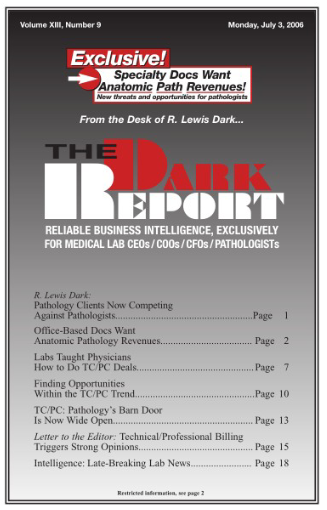CEO SUMMARY: Specialist physicians think they’ve found gold in anatomic pathology services. Indifferent regions of the United States, urologists and gastroenterologists are taking active steps to cut themselves a piece from the anatomic pathology revenue pie. Some physician groups are building their own histology labs and hiring pathologists. Others are entering into TC/PC arrangements as …
Office-Based Docs Want Anatomic Path Revenues Read More »
To access this post, you must purchase The Dark Report.


